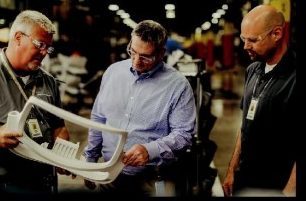Robotics as a Service (Raas) Market to Gain due to Adoption of Operational Intelligence and Data Analytics: Radiant Insights, Inc.
Global Robotics as a Service (RaaS) Market is projected to grow significantly in the forecast period owing to the high cost of deployment of robots. Deployment of robots requires huge initial one-time payment due to the equipment cost that comprises expensive sensors and software. Numerous end-users are adopting robotics as a service (RaaS) over deployment of robots due to the costly training of specialists. It encompasses maintenance charges in terms of upgrades, electricity and servicing. The cost involved in the deployment of robots is one of the major reasons for the substantial growth of robotics as a service (RaaS) market. Robotics as a service (RaaS) is essentially a business model that allows end users to use specialized service robots and pay for the proficient services on hourly or monthly basis. This motivates the end users to adopt robotics services through the RaaS model.
Besides the robotics services, the end users can also take advantage of technologies like cloud computing to improve their contributions via services like real-time robot monitoring. Robotics is widely used technology till date and have spread their spectrum in various industries and applications worldwide. From retailing to manufacturing and healthcare, robots perform almost every human activity competently with remarkable efficiency and speed. Spurring growth is observed in could-based storage, artificial intelligence and computing. Owing to this growth, robots-as-a-service business models are attaining lot of traction globally, which ultimately stimulates robotics as a service (RaaS) market. Robots as a service model offers largely customized business solutions that differ from customer to customer with numerous options and tasks. Their services are greatly reliant on high capacity and low-latency computing surrounding. Most manufacturing industries require heavy operational tasks in plants, warehouses and distributional centers for robotics.
Agricultural drones and robots are used for wide variety of tasks. Robots as a service is also used in several applications in agriculture. Moreover, robotics is playing an important role in performing surgeries, interacting with patients and checking their health status for further recommendations. The end users are extensively focusing on improving the real-time data analytics, developing the integration of accumulated data and allowing the collaboration of data. This enable the experts to work on the information simultaneously and allow the inspection team to take wise decisions concerning the maintenance and operation of drones and robots. The adoption of data analytics and operational intelligence is recognized as one of the major factors that will boost robotics as a service (RaaS) market in near future. Robotics as a service (RaaS) market is categorized on the basis of type, application and geography.
On the basis of type, the robotics as a service (RaaS) market is divided into personal service robots and professional service robots. Professional service robots is projected to dominate the robotics as a service (RaaS) market in near future owing to the growth in logistics application. The application segment of robotics as a service (RaaS) market is divided into construction, defense, domestic, healthcare, logistics, field, and entertainment & leisure. Geographically, robotics as a service (RaaS) market is segmented as Latin America, Middle East and Africa, North America, Europe and Asia Pacific. The marine, milking robots, and logistics robots are further predicted to upsurge robotics as a service (RaaS) market in Europe. The prominent companies covered here are inVia Robotics, Kraken Robotics, Sarcos, and Savioke.
RaaS involves a business model in which professional service robots are rented or leased on a monthly or hourly basis, along with upgradation, maintenance, and other basic services to end-users. Apart from renting the robots, vendors also leverage technologies such as cloud computing to enhance their offerings through services, such as real-time remote monitoring of robots.











